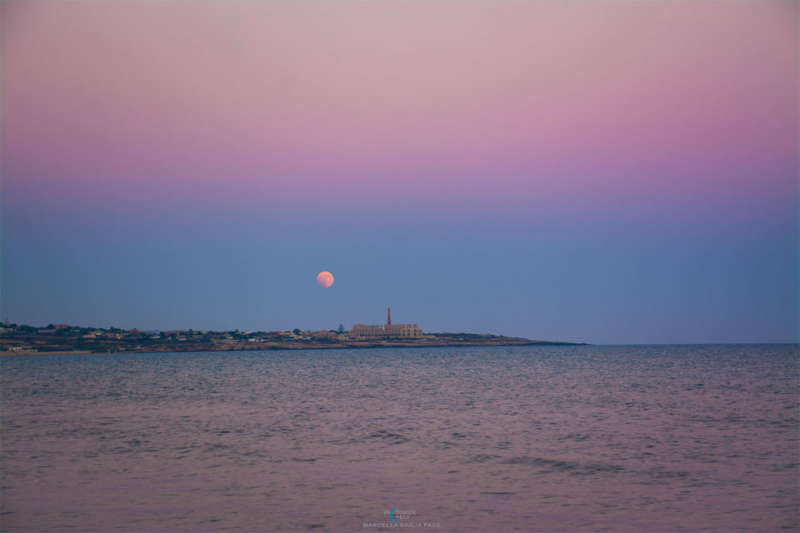Credit & Copyright: Marcella Giulia Pace
Explanation:
Can you find two Earth shadows in today's image?
It's a bit tricky.
To find the first shadow, observe that the top part of the
atmosphere appears pink and the lower part appears blue.
This is because the top half is exposed to
direct sunlight, while the lower part is not.
The purple area in between is known as the
Belt of Venus,
even though Venus can only appear on the other side of the sky, near the
Sun.
The blue color of the lower atmosphere
is caused by the Earth blocking sunlight, creating Earth shadow number 1.
Now, where is the second Earth shadow?
Take a look at the Moon.
Do you notice
something unusual about the lower left part?
That area appears unusually dark because it is in the
shadow of the Earth, creating Earth shadow number 2.
To be precise, the
Moon was captured during a
lunar eclipse.
This carefully timed image was taken in
Sampieri,
Sicily,
Italy, in July 2018.
1999 2000 2001 2002 2003 2004 2005 2006 2007 2008 2009 2010 2011 2012 2013 2014 2015 2016 2017 2018 2019 2020 2021 2022 2023 2024 2025 |
Yanvar' Fevral' Mart Aprel' Mai Iyun' Iyul' Avgust Sentyabr' Oktyabr' Noyabr' Dekabr' |
NASA Web Site Statements, Warnings, and Disclaimers
NASA Official: Jay Norris. Specific rights apply.
A service of: LHEA at NASA / GSFC
& Michigan Tech. U.
|
Publikacii s klyuchevymi slovami:
shadow - lunnoe zatmenie - poyas Venery
Publikacii so slovami: shadow - lunnoe zatmenie - poyas Venery | |
Sm. takzhe:
Vse publikacii na tu zhe temu >> | |
